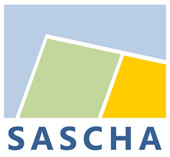Subproject 700
SP 700 - Landscape planning
Introduction - Objectives - Methods - Results
Introduction
Task of SP700 will be the creation of necessary requirements for the development of planning tools with a focus on administrative bodies responsible for planning . Tools will be adapted to the specific conditions of the region and should initiate first steps for the implementation of measures. Therefore the results of the subprojects are brought together and assessed regarding potentials and conflicts of land use. This forms the basis for specification of the objectives for sustainable spatial development and further for the development of different scenarios. Additionally the objectives allow the assessment of the scenarios in cooperation with the stakeholders, which are essential and responsible for the realization. Socio-economic and natural sciences aspects are linked and integrated in this planning project.
Objectives
The main aim of the subproject is the development of strategies and planning tools for a sustainable and resource-conserving configuration of the land use change in the Tyumen Oblast. The implementation of the developed strategies and tools in collaboration with the local stakeholders is essential.
For this purpose the following steps will be taken:
- Acquisition and analysis of basic conditions with relevance to landscape planning (planning instruments and their impacts, planning processes, stakeholders)
- Conflict analysis and delineation of priority areas as a basis for the development of different spatial scenarios of land use change
- Development and coordination of strategies and instruments for an optimal use of land use potentials while simultaneously avoiding or reducing emission of greenhouse gases as well as negative effects on biodiversity and natural resources
- Testing of partial aspects of the developed strategies and instruments in collaboration with local stakeholders
- Adaptation of the implemented strategies and instruments according to the experiences of the testing
Methods (examples)
- Evaluation of existing and newly obtained data with regards to land use requirements (e. g. agriculture, settlement, raw material extraction), habitat qualities and natural recources by using geographic information systems (GIS)
- GIS based blending of spatial data to identify priority areas and conflicts between different types of land use:
- Conflicts in the existing usage pattern (non-sustainable spatial use)
- Not used potentials in the existing usage pattern
- Sensitivity and vulnerability of spatial functions and uses to the predicted climate change
- Comparative analysis of basic conditions in order to derive suitable measures of landscape and spatial planning
Results and Materials
The following results shall be achieved:
- Overview of options for planning tools and strategies
- (Inventory and) objective maps for the influencing factors (e.g. land use and intensity, potential for the absorption of greenhouse gases, water balance, quality and sensitivity of ecosystems)
- Spatial specified planning scenarios in local and regional scales
- Measure concepts coordinated with the local stakeholders
- Implemented pilot measures and projects
Contact
Contact
Prof. Dipl.-Ing. Hubertus von Dressler
Hochschule Osnabrück
Fakultät Agrarwissenschaften und Landschaftsarchitektur
Postfach 1940
D- 49009 Osnabrück
Tel.: +49 (0) 541 969 5180
Fax: +49 (0) 541 969 5205
E-Mail: h.von-dressler@hs-osnabrueck.de
Web: http://www.al.hs-osnabrueck.de/9324+M55e4acca8aa.html?&L=0









